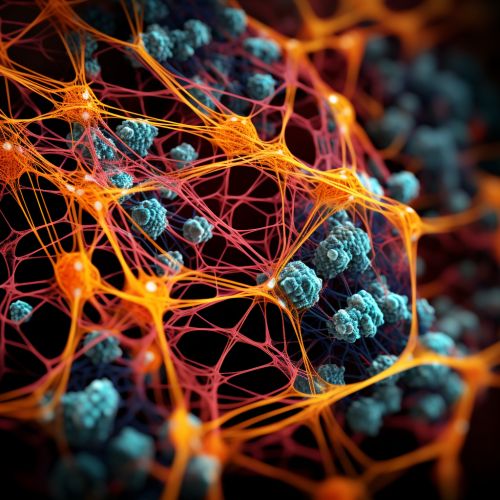Extracellular Matrix in Tissue Engineering
Introduction
The extracellular matrix (ECM) is a complex network of proteins and carbohydrates that provides structural and biochemical support to the surrounding cells. In tissue engineering, the ECM plays a crucial role in guiding cell behavior and function, including cell adhesion, migration, proliferation, and differentiation.
Structure of Extracellular Matrix
The ECM is composed of two main classes of biomolecules: fibrous proteins and proteoglycans. Fibrous proteins, such as collagen, elastin, and fibronectin, provide tensile strength and elasticity to the ECM, while proteoglycans fill the spaces between the fibrous proteins and bind water to provide hydration and resilience.


Role of Extracellular Matrix in Tissue Engineering
In tissue engineering, the ECM is used as a scaffold to support the growth and differentiation of cells into functional tissues. The ECM provides a three-dimensional structure that mimics the natural environment of the cells, promoting their survival and function.
Cell Adhesion
The ECM promotes cell adhesion through specific binding sites on its fibrous proteins. These binding sites interact with cell surface receptors, such as integrins, to anchor the cells to the ECM and facilitate their attachment and spreading.
Cell Migration
The ECM also guides cell migration, a critical process in tissue repair and regeneration. The fibrous proteins of the ECM provide a substrate for the cells to move along, while the proteoglycans create a hydrated environment that facilitates cell movement.
Cell Proliferation and Differentiation
The ECM regulates cell proliferation and differentiation through its biochemical and mechanical properties. The ECM provides growth factors and other signaling molecules that stimulate cell proliferation and differentiation, while its stiffness and elasticity influence cell shape and behavior.
Extracellular Matrix in Tissue Engineering Applications
The ECM has been used in a variety of tissue engineering applications, including skin, bone, cartilage, and vascular tissue engineering.
Skin Tissue Engineering
In skin tissue engineering, the ECM is used as a scaffold to support the growth of skin cells, such as keratinocytes and fibroblasts. The ECM provides a natural environment for the cells, promoting their proliferation and differentiation into a functional skin tissue.
Bone Tissue Engineering
In bone tissue engineering, the ECM is used to guide the differentiation of stem cells into osteoblasts, the cells responsible for bone formation. The ECM provides the necessary biochemical signals and mechanical cues to promote osteoblast differentiation and bone tissue formation.
Cartilage Tissue Engineering
In cartilage tissue engineering, the ECM is used to support the growth and differentiation of chondrocytes, the cells responsible for cartilage formation. The ECM provides a three-dimensional structure that mimics the natural cartilage environment, promoting chondrocyte survival and function.
Vascular Tissue Engineering
In vascular tissue engineering, the ECM is used to guide the formation of blood vessels. The ECM provides the necessary signals to promote the differentiation of endothelial cells and smooth muscle cells, the two main cell types in blood vessels.
Conclusion
The extracellular matrix plays a crucial role in tissue engineering, providing a natural environment that supports cell adhesion, migration, proliferation, and differentiation. Through its biochemical and mechanical properties, the ECM guides the formation of functional tissues, making it a key component in various tissue engineering applications.
